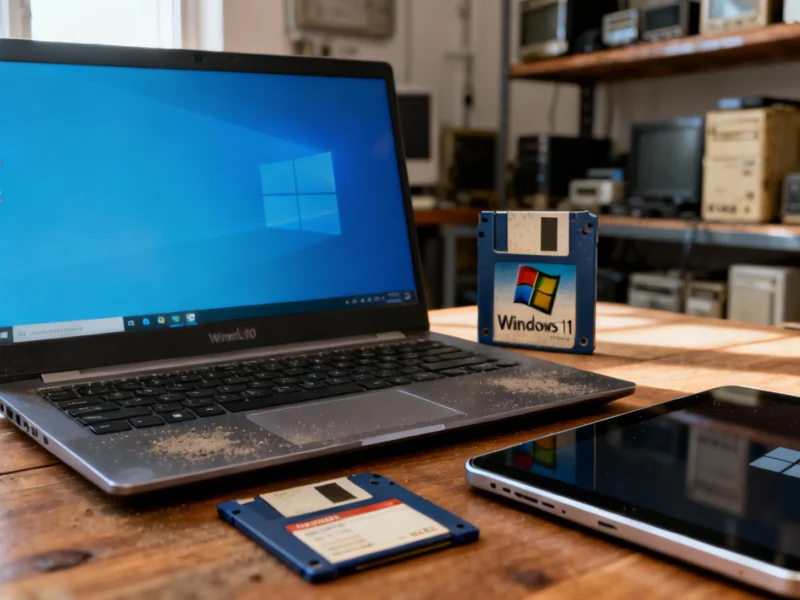Note: Featured image is for illustrative purposes only and does not represent any specific product, service, or entity mentioned in this article.
The Passwordless Revolution Hits a Critical Juncture
Dashlane’s recent announcement of passwordless access represents a significant milestone in cybersecurity evolution, yet the delayed mobile implementation until early next year reveals the complex challenges facing enterprise adoption. While the desktop version now supports completely password-free authentication through Yubico security keys, this partial rollout underscores the technical hurdles in creating truly seamless cross-platform security solutions.
The partnership between Dashlane and Yubico addresses what security experts call “the last vulnerable mile” of credential management. By implementing the WebAuthn PRF specification, the companies have created a system where physical security keys serve dual purposes: both as authentication devices and as sources for encryption key derivation. This eliminates the master password entirely from the login process, effectively removing the most phishable element from the security equation.
How Passwordless Authentication Actually Works
Traditional password managers have always faced a fundamental paradox: if you need to be logged into your password manager to access everything else without passwords, how do you log into the password manager itself without a password? The WebAuthn PRF standard solves this by allowing physical security keys to generate both the authentication credentials and the encryption keys needed to decrypt your vault.
This approach represents a fundamental shift in how we think about digital security. Instead of relying on memorized secrets, the system depends on physical possession of a uniquely encoded security device. Each YubiKey contains proprietary information that distinguishes it from every other security key, making duplication virtually impossible. This physical requirement means that even if threat actors obtain your login information through sophisticated social engineering attacks, they cannot access your accounts without the physical key.
The Mobile Gap: What’s Missing and Why It Matters
The most significant limitation in Dashlane’s current implementation is the lack of mobile support. According to Dashlane’s director of product innovation Rew Islam, the delay stems from platform-level gaps in iOS and Android. “When there are these standards, we have to wait for the platforms to decide what to do with them,” Islam explained. “On iOS and Android, some of the plumbing for roaming authenticator support is just missing.”
This mobile gap presents substantial practical challenges for enterprises. In today’s hybrid work environments, employees routinely switch between desktop and mobile devices throughout their workday. The inability to access password management on mobile without reverting to traditional authentication creates security inconsistencies and workflow disruptions. This partial implementation highlights broader challenges in technology standardization across different platforms and ecosystems.
Backup Strategies: The Critical Importance of Redundancy
One of the most crucial aspects of adopting passwordless authentication is implementing robust backup strategies. Unlike traditional password systems with recovery options, losing your only security key means permanent loss of access to your password manager and all associated accounts. “You’ve got to set up an extra key,” Islam emphasized. “You stow that key wherever you want or even go with multiple roaming authenticators.”
The necessity for physical backup keys introduces new operational considerations. Enterprises must develop policies for key distribution, storage, and recovery that balance security with accessibility. This represents a significant shift from traditional credential management and requires careful planning around risk management protocols and business continuity planning.
Enterprise Implications and Migration Considerations
For organizations considering the transition to passwordless authentication, several factors demand careful evaluation:
- Mobile workforce readiness: The current mobile gap may delay full deployment until platform support improves
- Hardware procurement and management: Organizations must budget for and manage physical security keys for all users
- Training and change management: Employees need education on proper key usage and backup procedures
- Integration with existing systems: Compatibility with current enterprise infrastructure must be verified
The timing of Dashlane’s announcement coincides with broader industry developments in passwordless authentication. As more organizations recognize the limitations of traditional credential systems, solutions like Dashlane’s WebAuthn PRF implementation represent the future of enterprise security. However, the mobile implementation delay serves as a reminder that even promising technological advances often face practical deployment challenges.
The Road Ahead: What to Expect in 2025
With Yubico promising new Software Development Kits and mobile platform support expected by early 2025, enterprises have time to prepare for full passwordless implementation. This preparation period should include pilot programs, security policy updates, and staff training. The evolution toward passwordless authentication represents one of the most significant related innovations in cybersecurity, potentially rendering one of the most common attack vectors obsolete.
As organizations navigate this transition, the balance between security and convenience remains paramount. While passwordless authentication eliminates phishing risks, it introduces new considerations around physical security and redundancy. The successful implementation will depend not just on technological maturity but on organizational readiness and comprehensive planning for this fundamental shift in how we secure our digital lives.
This article aggregates information from publicly available sources. All trademarks and copyrights belong to their respective owners.



